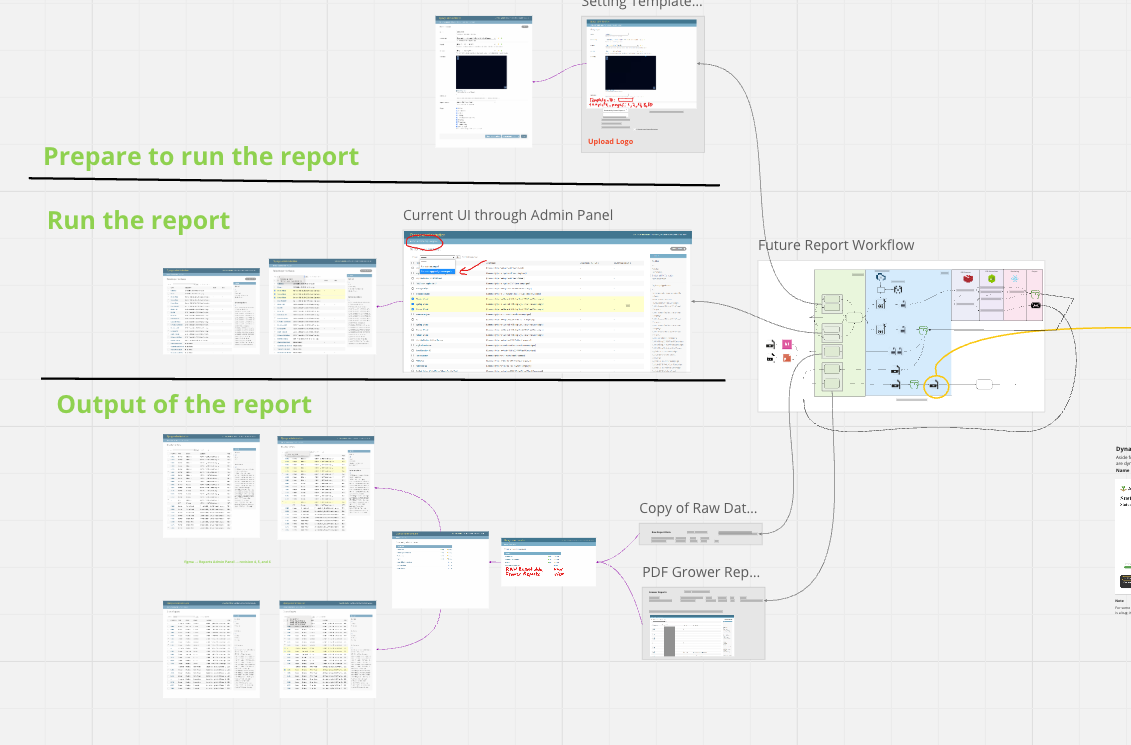Carbon Sequestration
Customer Journey Map

Background:
In Nutrien's ongoing pursuit of sustainability and carbon emissions reduction, the company has made significant commitments, as documented in its ESG report. These commitments underscore the need for seamless collaboration among all stakeholders involved in this mission.
While the concept of sustainability in agriculture has been around for some time, it's relatively new for major agricultural companies to actively engage and encourage more growers to participate, offering incentives to farmers as part of the process.
To facilitate this transformative initiative, various teams came together. The Sustainability Team, headed by the Marketing Team, played a central role in negotiating campaigns, devising metrics and strategies, and recruiting professionals to support farmers nationwide. The Digital Team assumed responsibility for the sustainability platform, a critical component given the extensive data collection required for the project's success. Simultaneously, the Agronomy/Science Team contributed their scientific expertise to the endeavor, aiding in data collection and analysis, ultimately paving the way for continuous improvement. Additionally, the Customer Support Team played a crucial role by providing necessary assistance and guidance for users interacting with the digital platform and entering copious amounts of data.
My process for creating a service blueprint begins by confirming its suitability for addressing the problem at hand. After ensuring that a service blueprint is the right approach, we move forward with the blueprinting process.
1.
Project Kick-Off:
Define problems, scope, and goals
Identify stakeholders and SMEs
Define the timeline
2.
Internal Investigation:
Review existing research studies
Preliminary interviews with SMEs and stakeholders
Workshop Design:
Create the template
Define grouping and activities
Planning and timeline
4.
Workshop:
Workshop facilitation
Post-workshop clean up/synthesis and presentation
3.
Tools:
Miro
Microsoft Teams
Figma
My Role:
Senior UX Researcher
Facilitation
Synthesis
Reporting
Team:
Two (2) UX Designers
One (1) Product Managers
Two (2) Sustainability Directors
Two (2) Agronomists
Two (2) Filed Representatives
One (1) Engineer
Timeline:
Kick-Off: 1 week
Internal Investigation: 1 week
Workshop Design and Planning: 2 weeks
Workshop: 1 week
Post-Workshop: 2 weeks
Kick-Off:
Problems:
At the beginning of this project, it became evident that several critical issues needed attention to create a customer-centered digital experience.
Team Structure Challenges
Our teams, representing different departments, operated separately at various stages of sustainability projects. This disjointed approach resulted in:
Diverse User Knowledge: Teams had varying levels of understanding about our users, particularly the farmers.
Silos and Collaboration Gaps: Teams functioned in isolated silos, limiting interaction and collaboration. They focused on immediate tasks, lacking visibility into each other's work.
Issues Identification and Resolutions
The other category of problems revolved around our ability to identify and resolve issues. These challenges encompassed:
Process Visibility Deficiency: We lacked a holistic view of the entire project process, from start to finish. This led to problems being treated equally, without clear priorities.
Contextual Understanding Shortcomings: Teams failed to consider problems in the context of the user's long journey, resulting in a narrow perspective and reduced motivation to solve them.
These problems prompted the development of the GOAL for creating a unified customer journey map to align cross-functional teams and stakeholders, prioritize sustainability project issues, and foster a shared vision for sustainability goals within the organization.
Internal Investigation:
I initiated a thorough review of previous research, encompassing the following steps:
Roles and Responsibilities Clarification: Identifying pivotal team members crucial for workshop inclusion, ensuring comprehensive coverage without an overwhelming number of attendees.
High-Level Journey Understanding: Comprehending the overarching journey to facilitate effective workshop design and preliminary preparations.
Identification of Critical Tasks and Internal Roles: Fostering meaningful conversations during the workshop, enhancing domain knowledge, and improving overall comprehension.
To kickstart this process, I delved into Miro boards of all types, sifted through research reports, and combed through Confluence documents.
Subsequently, I engaged in one-on-one sessions with key Subject Matter Experts (SMEs) to cultivate familiarity, empathy, and rapport. This approach deepened my understanding of each role and garnered valuable feedback on the primary phases of the journey. The roles involved in these sessions comprised Sustainability Directors, the Sustainability Field Team, the Representative Science Team/Agronomists, and Engineers.
Workshop Design:
To ensure the workshop's efficiency and impact, I carefully designed it, tailoring each element to our goals, needs, and the number of participants. Here's an overview:
Template: A key foundation was the template, crafted to capture all necessary information and data points identified during my investigation. The main phases were pre-populated based on prior research and SME feedback, streamlining the workshop process.
Persona: I selected a persona representing 80% of industrial farmers. This choice minimized distractions by avoiding speculative scenarios, and fostering focused discussions.
Scenario: Similar to the persona, I chose a realistic scenario covering a broad range of cases. This approach helped keep discussions within scope and relevance.
Breakout Teams: Given the complexity of the journey involving numerous participants, I strategically organized breakout teams. Participants were grouped based on their domain knowledge and role, ensuring each team included a UX designer proficient in managing Miro boards and adept at capturing key insights.
Activities and Schedule: Beyond the foundational elements, I structured the two sessions of the four-hour workshop into specific activities, carefully time-boxing each. This approach ensured a well-paced and organized exploration of the identified topics.
Workshop:
I facilitated the workshop with significant support from my team. Engaging with each participant beforehand, establishing rapport, played a pivotal role in fostering collaboration and boosting engagement. Post-workshop, we meticulously cleaned up our board, transforming the map into a company-branded representation, and shared the final result with everyone. Below, you can see the polished outcome.
Outcome:
We gained a comprehensive understanding of the entire process, identified and communicated challenges and pain points. The document was frequently used for onboarding and cross-referencing work, providing context and 'why' behind tasks. We also highlighted process risks and secured stakeholder approval for previously unapproved tasks, fostering a collaborative cross-functional team environment. Furthermore, the team became much more customer-centric in their decision-making process, with a clear focus on the farmer and how everything we do affects them at the center.











